Proper installation of door coordinator hardware is crucial for ensuring double doors close in the correct sequence, maintaining security and functionality.
This comprehensive guide covers everything you need to know about door coordinators, including their types, how they work, usage occasions, and detailed installation steps to help you achieve a seamless setup.
Table of Contents
What is a door coordinator?
A door coordinator is a device used in double-door installations to ensure that the doors close in the correct order. This is particularly important for fire-rated doors or doors with an overlapping astragal. The coordinator ensures that the inactive leaf closes before the active leaf, ensuring a proper seal and alignment.
Types of Door Coordinators
a. Bar Coordinator
Door coordinator Bar is concead door coordinator which consist of a bar mechanism and installed at the top of the door frame. This door coordinator device is suitable for standard double-door configurations. They are available in various lengths to accommodate different door sizes. The bar slides back and forth, controlled by the active door leaf, ensuring that the inactive leaf remains open until the active leaf is almost closed.
Advantages:
• Simple and effective for most applications
• Easily adjustable
• Durable and long-lasting
Disadvantages:
• May require more space at the top of the door frame
• Can be visible, affecting aesthetics.
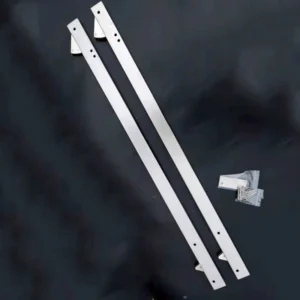
b. Gravity Coordinators
Gravity coordinators use the force of gravity to control the door closing sequence. They are often used in situations where minimal maintenance is desired. This type is generally more reliable in the long run due to its simplicity. Gravity coordinators are typically mounted at the top of the door frame and use a pivoting mechanism that engages when the active door starts to close.
Advantages:
• Low maintenance
• Reliable over long periods
• Simple mechanism
Disadvantages:
• May not be suitable for all door types
• Installation can be more complex
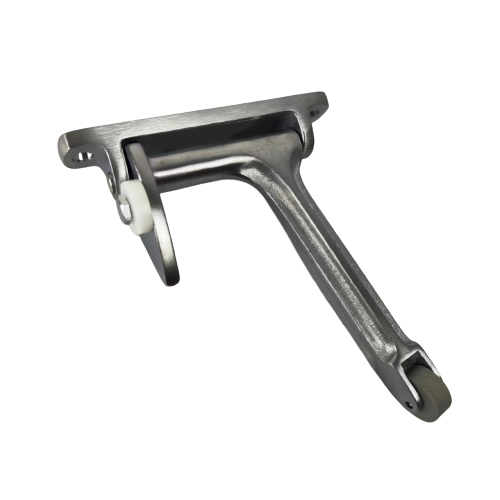
c. Plunger Coordinators
Plunger coordinators use a mechanical plunger to control the door sequence. When the active door closes, it engages the plunger, which then allows the inactive door to close. These are typically used in more complex door setups requiring precise control. Plunger coordinators are often hidden within the door frame, providing a more aesthetically pleasing solution.
Advantages:
• Precise control over door closing sequence
• Hidden mechanism for better aesthetics
• Suitable for complex door setups
Disadvantages:
• Can be more expensive
• Requires precise installation
How Door Coordinators Work?
Door coordinators function by controlling the order in which double doors close. This ensures that any astragal or overlapping door parts align correctly, maintaining security and functionality. Here’s a step-by-step explanation of how door coordinators work:
1. Engagement: When the active door leaf starts to close, it engages the mechanism of the door coordinator. This mechanism can be a bar, gravity pivot, or plunger, depending on the type of coordinator used.
2. Holding the Inactive Leaf: The engaged mechanism temporarily holds the inactive leaf open. This prevents it from closing prematurely and allows the active leaf to close properly.
3. Releasing the Inactive Leaf: Once the active leaf is nearly closed, the coordinator mechanism releases the inactive leaf. This allows the inactive leaf to close securely behind the active leaf.
4. Ensuring Proper Closure: The coordinator ensures that any overlapping parts, such as astragals or seals, align correctly. This is especially important for fire-rated doors, where a proper seal is necessary to maintain fire resistance.
By ensuring the correct closing sequence, door coordinators help maintain the security and functionality of double-door systems. They are particularly important in situations where doors must provide a secure barrier, such as in fire-rated doors or high-security areas.
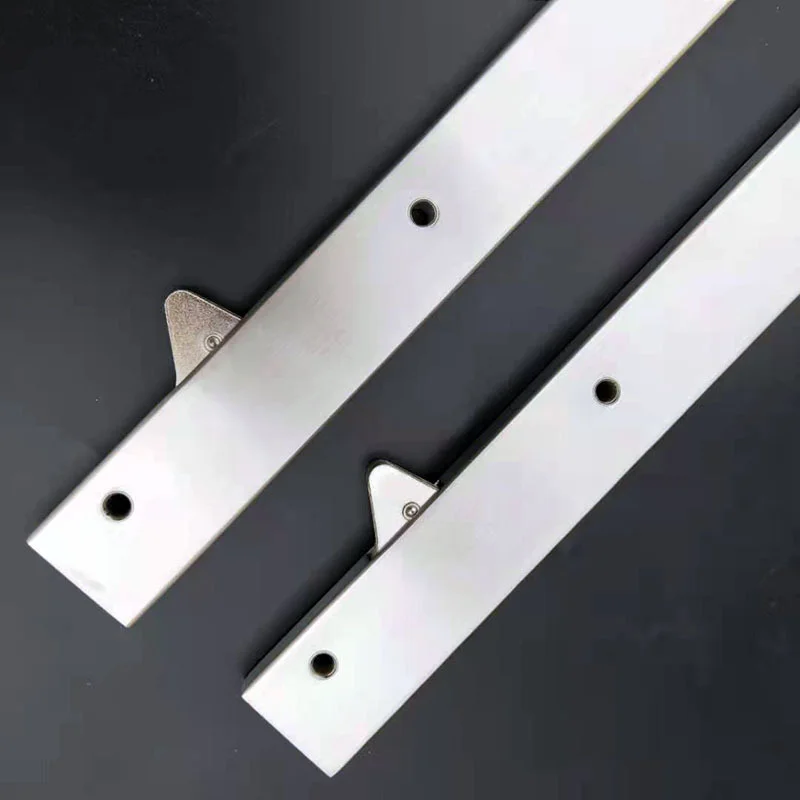
Usage Occasions for Door Coordinators
a. Fire-Rated Doors
In fire-rated doors, proper closure is crucial to ensure the fire barrier is effective. Door coordinators help maintain this barrier by ensuring the doors close in the correct sequence. This ensures that any seals or astragals align properly, maintaining the integrity of the fire barrier.
Fire-rated doors are commonly used in commercial buildings, schools, and hospitals. In these settings, maintaining a proper fire barrier is critical for safety. Door coordinators help ensure that the doors close correctly, providing a secure barrier against the spread of fire and smok.
b. Commercial Buildings
In commercial buildings with high traffic, such as offices and shopping centers, door coordinators ensure that double doors function smoothly, enhancing security and ease of use. Proper door coordination helps prevent damage to the doors and frames, reducing maintenance costs and prolonging the lifespan of the doors.
In these settings, door coordinators also help improve the flow of traffic. By ensuring the doors close correctly, coordinators prevent doors from becoming stuck or misaligned, which can disrupt the flow of people and create safety hazards.
c. Healthcare Facilities
In hospitals and clinics, door coordinators help maintain privacy and security by ensuring doors close correctly. This is particularly important in emergency situations, where doors must close quickly and securely to maintain patient privacy and safety.
In healthcare facilities, door coordinators also help ensure that doors operate smoothly and quietly. This is important in settings where noise levels must be kept to a minimum, such as in patient rooms or examination areas.
Double Door Coordinator Installation Guide
a. Tools and Materials Needed
• Door coordinator
• Screws and mounting hardware
• Drill
• Screwdriver
• Measuring tape
• Level
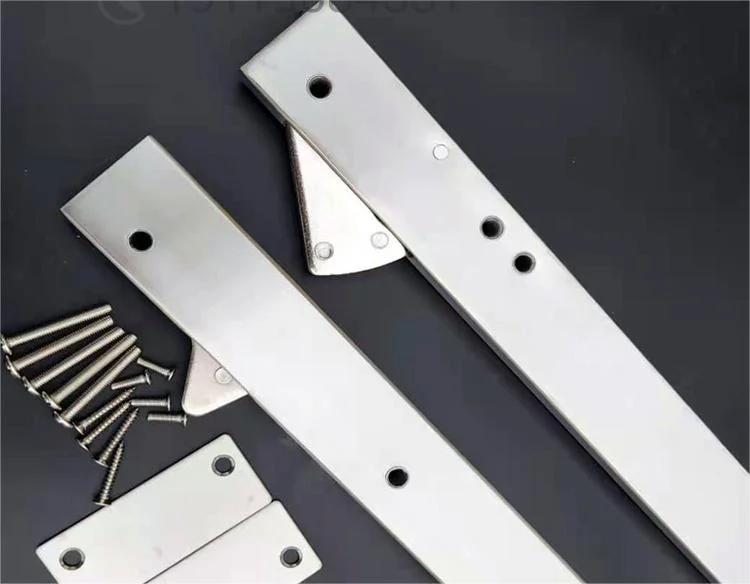
b. Double Door Coordinator Installation Steps
1.Measure and Mark:
Measure the width of the door frame to determine the proper length for the coordinator. Mark the installation points on the door frame. It is important to measure accurately to ensure the coordinator functions correctly.
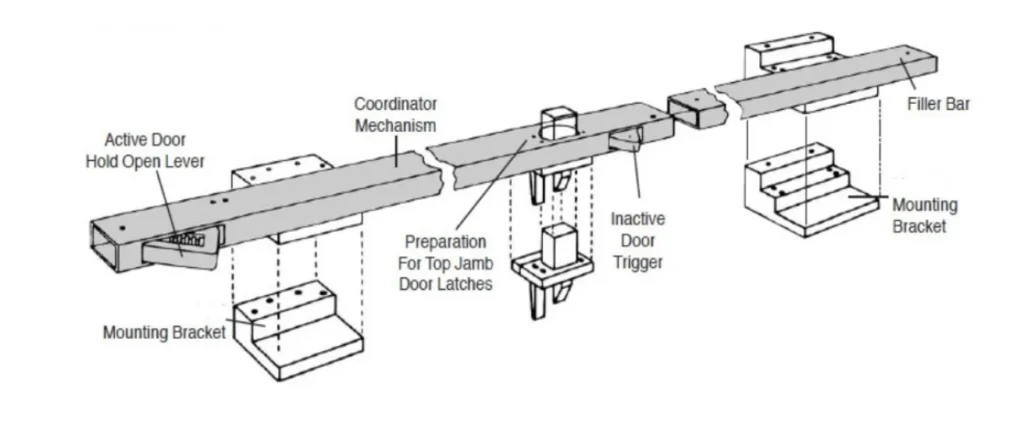
2.Mount the Coordinator:
Using a drill, attach the door coordinator to the marked points on the door frame. Ensure it is level for proper operation. The coordinator should be securely fastened to prevent it from becoming loose over time
3. Adjust the Mechanism:
Follow the manufacturer’s instructions to adjust the coordinator mechanism. This may involve setting the plunger or bar to the correct position to control the door sequence. Proper adjustment is crucial for ensuring the doors close in the correct order.
4. Test the Operation:
Open and close the doors several times to ensure the coordinator is working correctly. Make any necessary adjustments to ensure smooth operation. The doors should close in the correct sequence without sticking or misaligning.
5.Secure All Components:
Once satisfied with the operation, securely fasten all screws and components. Check for any loose parts and tighten them as needed. Regularly check the coordinator to ensure it remains secure and functions properly.

What are the common problems and solutions in the installation of double door coordinators?
Here are some common problems and solutions in the installation of double – door coordinators:
Doors not opening and closing smoothly
- Problem cause: The track is not installed horizontally or is blocked by foreign objects, the connecting parts are too tight or too loose, or the door weight is unevenly distributed.
- Solution: Use a level to check and adjust the track to make it horizontal. Clean the track to remove any foreign objects. Adjust the tightness of the connecting parts to ensure a proper fit. If the door weight is uneven, re – balance the doors or check if the door hinges are installed correctly.
Doors not closing completely
- Problem cause: The limit switch is not set correctly, there is interference at the door closing position, or the spring force of the coordinator is insufficient.
- Solution: Readjust the limit switch according to the door size and closing position requirements. Check the surrounding area of the door for any objects that may be interfering with the door closing and remove them. If the spring force is insufficient, replace the spring or adjust the spring – tensioning device according to the manufacturer’s instructions.
Difficulty in installing the coordinator
- Problem cause: Inaccurate measurement of the door and installation position, incorrect understanding of the installation instructions, or poor – quality installation tools.
- Solution: Re – measure the door and installation position carefully to ensure the accuracy of the size and position. Read the installation instructions carefully again and clarify any unclear points. If possible, consult the manufacturer’s customer service. Use high – quality installation tools to ensure the smooth progress of the installation process. If the problem persists, consider seeking professional installation services.
Tips:
How to size a door coordinator for double door?
1.Measure the Door Width:
• Measure the total width of the double doors, from edge to edge when both doors are closed.
• If the doors are of unequal width, measure each door individually and add the measurements together.
2. Determine the Door Height:
• Measure the height of each door from the bottom to the top edge.
• This measurement ensures that the coordinator will fit within the height constraints of the door frame.
3. Check for Obstructions:
•Ensure there are no obstructions at the top of the door frame where the coordinator will be installed.
•Consider any hardware, molding, or structural elements that might interfere with the installation.
4. Select the Coordinator Type:
• Choose between bar, gravity, or plunger coordinators based on the door type and usage occasion.
• Bar coordinators are common for standard applications, while gravity and plunger coordinators are used for specific needs.
5. Refer to Manufacturer Specifications:
• Check the manufacturer’s specifications for the coordinator models you are considering.
• Most manufacturers provide guidelines on door width and height compatibility for their products.
6. Consider Door Weight:
• Ensure the coordinator can handle the weight of your doors, especially if they are heavier than standard doors.
• Refer to the manufacturer’s recommendations for weight limits.
7. Account for Astragals or Overlapping Parts:
• If your doors have astragals or overlapping parts, ensure the coordinator is suitable for this setup.
• The coordinator should allow for proper alignment of these components when the doors are closed.
Example Calculation
Let’s say you have double doors each measuring 36 inches wide and 84 inches tall. Here’s how you would size the door coordinator:
1. Total Door Width: • Each door is 36 inches wide, so the total width is 36 + 36 = 72 inches. 2. Door Height: • Each door is 84 inches tall. 3. Select Coordinator Type: • Choose a bar coordinator for standard applications or another type based on specific needs. 4. Manufacturer Specifications: • Check that the coordinator model you select supports doors up to 72 inches wide and 84 inches tall. 5. Door Weight: • Ensure the coordinator can support the weight of the doors. If each door weighs 150 pounds, make sure the coordinator is rated for at least this weight.
Which side of the door does the coordinator mount to?
Typically, the coordinator mechanism is installed on the hinge side of the active door’s stop—for instance, on bar-type systems.
How much longer should the coordinator be compared to the active door?
Recommended coordinator lengths exceed the active door width by about 4 inches to ensure proper coverage and function.
Can filler bars be field-cut to length?
Yes—filler bars used to extend coordinator coverage across an opening can typically be cut to fit on-site.
Conclusion
Door coordinators are essential for maintaining the functionality and security of double-door systems. By understanding the different types, how they work, usage occasions, and the installation process, you can ensure your doors operate smoothly and reliably. Whether in commercial buildings, healthcare facilities, or fire-rated doors, proper installation and maintenance of door coordinators help enhance safety and efficiency.
With this comprehensive guide, you now have the knowledge to choose the right door coordinator for your needs and install it correctly. Ensuring your doors close in the proper sequence not only enhances security but also prolongs the lifespan of your doors, saving you time and money on maintenance.
Also if you looking for high-quality door coordinators? Estar Hardware from China offers reliable door coordinators with stable quality and fast delivery. Ensure your double doors function smoothly and securely with our top-notch products. Contact us today to learn more and get a quote for your project!